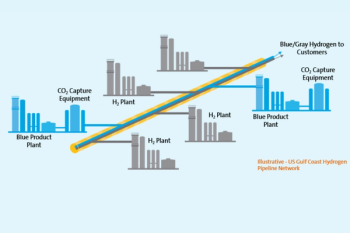
QUALIFYING GAS TURBINES FOR MECHANICAL DRIVE APPLICATIONS
Steam and gas turbines were first developed for power generation — a pioneer industry in many aspects — and then adapted for mechanical drive applications, such as compressor or pump drive services.As a result,manywell-known gas turbine mechanical drive models have been adapted from power generation.
This adaption or qualification process should be continued because only a limited number of gas turbines have been qualified for mechanical drive. There is a constant need for new mechanical drivers for larger power ranges and those between available options (considering each gas turbine model covers a limited power and speed range). However, new gas turbines are more complex with more power density and the qualification processes for mechanical drive application present more challenges.
There are many successful gas turbine models for power generation applications (usually for a limited speed variation range). To use these gas turbines as compressor drivers, for example, an extensive qualification process (including studies and shop tests) must be performed.
A gas turbine for mechanical drive service should be able to drive mechanical equipment (usually a compressor) by providing sufficient string torque across the entire specified speed range, under all ambient air conditions and all operational situations. Gas turbine components are subject to a number of failure mechanisms, such as crack initiation from low-cycle fatigue, cycling crack propagation, disc burst and creep, all of which should be evaluated across the speed variation range. In particular, the following components should be assessed for a variable- speed range application:
•Axial compressor rotating and stationary blades
• Turbine rotor and buckets
• Combustion systems Accurate FEA (finite element analysis) dynamic-thermalmodels are required to calculate temperature distributions, transient behaviors, aero-mechanical loads, dynamicinertia loads, and other aspects of the operation in a variable-speed, mechanical drive application. The ability of air-compressor rotor and stator blades (and assemblies) to operate over the full variable-speed range is also important, particularly for single-shaft gas turbines, where the air-compressor shaft is directly coupled to the turbine shaft and driven equipment rotor assemblies.
A ping test (a physical test to determine the natural frequencies of an assembly) is useful for assessing a gas turbine’s variablespeed application. It consists of installing measuring devices on the machine and tapping it (usually with a special hammer). The assembly will then vibrate at its natural frequencies. A ping test can be employed to validate the analytical dynamicmodel of gas turbine assemblies (particularly the natural frequencies and natural modes of vibration).
A Variable Speed Drive (VSD) electric motor is often used as a starter-helper electric motor for a gas turbine in amechanical drive application because the gas turbine cannot provide sufficient torque at the start-up of the train. The VSD electric motor is necessary for some gas turbines (especially single-shaft gas turbines) to start the rotation and bring the train to a sustained speed.Torque ripple effect contributions from the VSD electric motor should be assessed and considered in the gas turbine qualification process, particularly for a single-shaft machine.
Resonance
The dynamic analysis often reveals that resonance may happen in a defined variablespeed range. For example, resonance could occur between the natural frequencies of the turbine section bucket and the excitation frequencies of a rotor, when operating in a variable-speed range. This could limit the variable-speed range. For a single shaft gas turbine, the minimum threshold of the machine’s variable-speed range is limited to around 90% of the normal gas turbine speed, due to this effect.
For mechanical drive gas turbines, additional starting torque can be important and be achieved by increasing the fuel flow-rate, boosting the air flow-rate and anticipating the turbine inlet guide vane opening. Even if a VSD electric motor is required, the starting torque capability of the gas turbine can allow a reduction inVSDelectricmotor size,which could have a major commercial impact.
A gas turbine is a complex and delicate machine and any above mentioned change, such as increasing the fuel flow-rate, boosting the air flow-rate, and so on, should require the user to explore the limits of the gas turbine, such as the air-compressor pressure ratio and the margin to the surge. A higher pressure ratio could result in movement of the axial air-compressor operation point toward the surge line, for example.
Axial air-compressors of gas turbines are vulnerable to this condition. One of the major concerns is a sudden surge and possibly an incipient rotating stall resulting in aero-mechanical vibration, gas turbine damage or even catastrophic failure.
For verification of pressure ratio increase, the air-compressor should be evaluated to detect potential instability in all possible operating modes. To achieve this, the air-compressor is instrumented with pressure probes (to detect aero-mechanical disturbances and rotating stall), vibration monitoring instruments and laser probes (to evaluate air-foils alternating stress values).
Finally, the fuel specification would be different in a mechanical drive application compared with a power plant. It can result in a gas turbine pressure ratio exceeding the limits, or even unacceptable behavior of combustion dynamics (leading to shortened operating life and poor reliability).
Generally, when applying a gas turbine model in a new application, extensive combustion system testing and verification may be needed. A new fuel, such as a fuel gas with a relatively high N2 content, common for somemechanical drive applications,may result in a weak flame, which in turn could lead to a combustion blow-out or unsuitable combustion dynamics.
A tailored solution should be formulated for this kind of problem. For example, increasing the dilution area of the combustion liners (to achieve a robust flame) coupled with combustion system modifications (such as redesigning the fuel nozzles) have resulted in successful designs for some mechanical drive applications.
Author
Amin Almasi is a Chartered Professional Engineer in Australia, Queensland and U.K. (M.Sc. and B.Sc. in mechanical engineering). He is a senior consultant specializing in rotating equipment, condition monitoring and reliability.
Newsletter
Power your knowledge with the latest in turbine technology, engineering advances, and energy solutions—subscribe to Turbomachinery International today.





